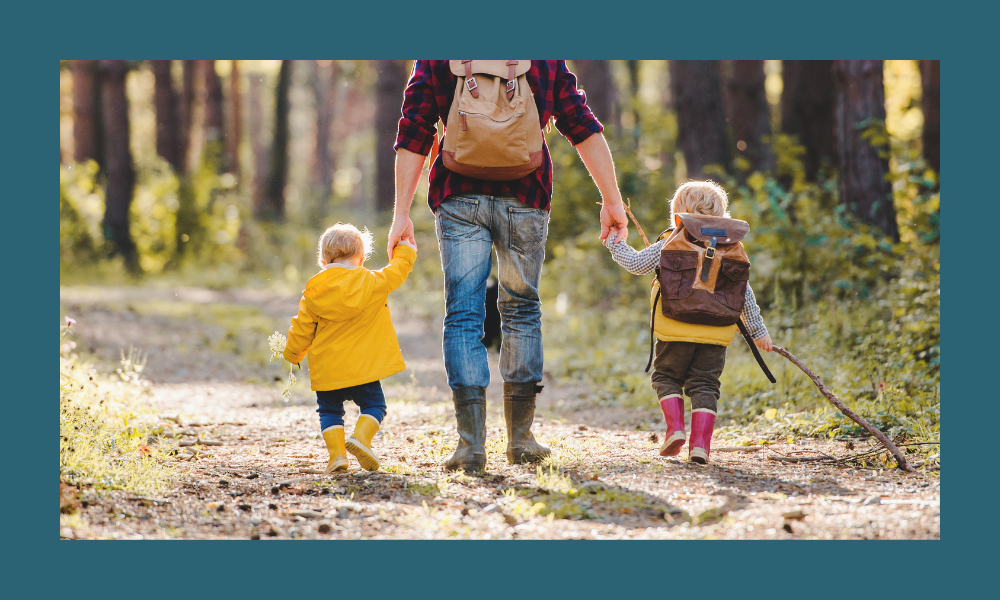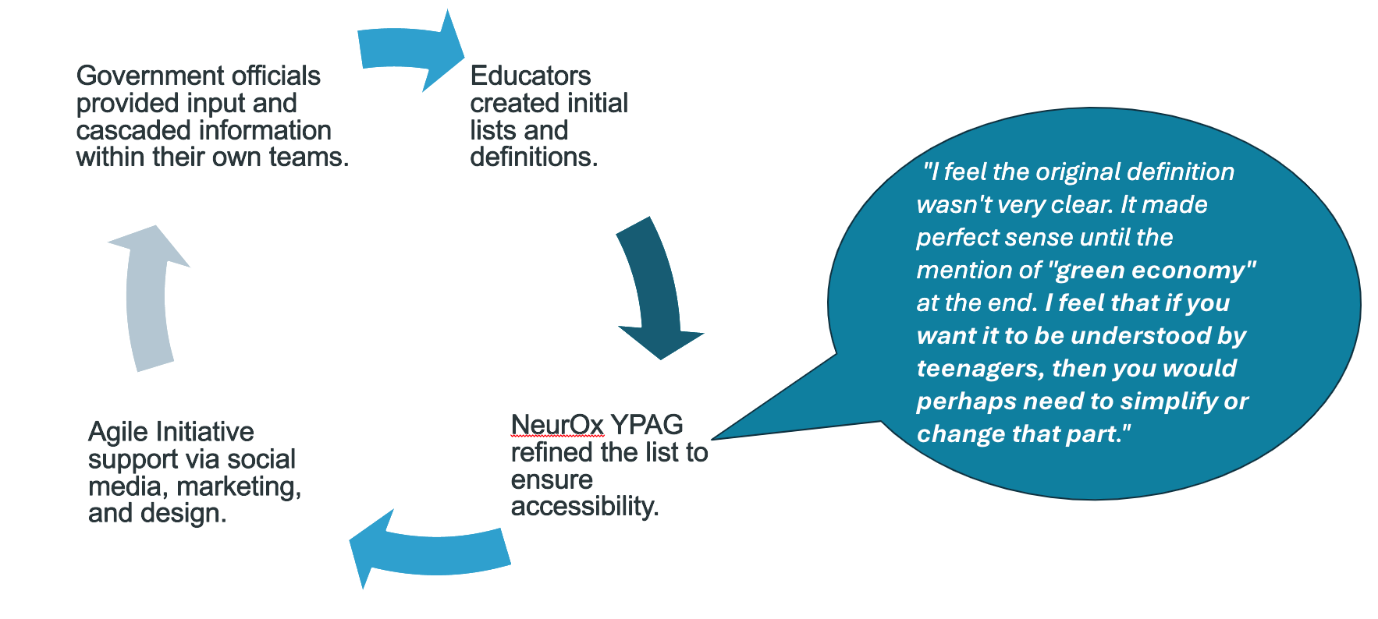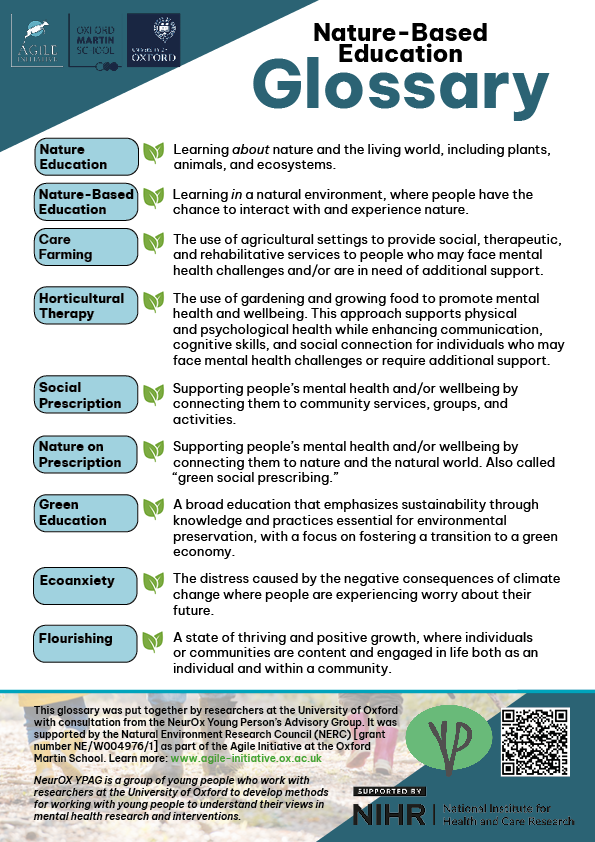Nature-Based Education: A shared language
Associated Sprints
Recent News
- NOW CLOSED | Agile Initiative Science-to-Policy Project Fund
- Rainforests, nature and biodiversity at COP30
- Connecting practitioners and researchers

Can nature-based programmes improve young people’s mental health and wellbeing in schools? That’s the central question of our new research project, Is Nature a Policy Solution to Mental Health in Schools? Led by Principal Investigators Professor Ilina Singh and Dr. Katrin Wilhelm, this Sprint aims to assess the value of nature-based interventions by gathering evidence that supports—or challenges—their effectiveness.
This blog post, written by Jessica Lorimer, a postdoctoral researcher on the project, explores one of the first steps in this research journey: the creation of a shared glossary.
What’s in a word?
One of the key challenges we encountered at the start of our new research project—and one that continues to come up—was defining what we mean by a “nature-based programme.” Does this term refer only to structured programmes explicitly designed for mental health and wellbeing, such as a forest intervention for anxiety? What about activities like gardening? Where do blue spaces come in?
Working across different departments and Division at the University of Oxford, and collaborating with students, teachers, and policymakers from the Department for Education (DfE), we quickly realized that “nature-based programmes” meant very different things to different people.
Developing a shared language
To address this challenge, we began our project with an exercise in co-creation: developing a glossary of key terms. Our goal was to map out the wide range of concepts that fall under “nature for mental health.” This glossary serves as a foundational tool, ensuring that researchers, teachers, policymakers, and young people share a common language when discussing nature-based mental health interventions.
So, what’s included in the glossary?
You can read an online version of the glossary here. The online version only includes a selection of words we have been using in the project—the original version contained more than 40!—but we’ve included the definitions we think are most important (or caused the most confusion!).
For instance, the glossary explains the difference between nature education and nature-based education (essentially: learning about nature versus learning in a natural environment). Additionally, we included phrases commonly used in the NHS, such as nature on prescription. In creating the glossary, our goal was not only to define these terms but also to highlight the wide variety of programmes that we were studying under the umbrella term “nature and mental health.”
Beyond providing clarity, the glossary also plays a crucial role in fostering engagement and investment in collaborative work. By inviting diverse stakeholders into the process, we created a space for dialogue and collective ownership over the language we use.
An iterative, collaborative process
We developed the glossary through an iterative process, incorporating multiple rounds of feedback and discussion from all our partners – teachers, students, policymakers, and the Agile central team.
This process began with two educational consultants compiling a long list of relevant terms. The list was then reviewed and cross-referenced by researchers through a scoping review of academic literature, incorporating definitions from online research databases, NHS websites, and a previous glossary developed by the NEUROSEC research team.
After that, the list went through a two-stage consultation process with young people—those who are actually taking part in the school-based nature programmes.
These young people were from the NeurOX Young Person’s Advisory Group (YPAG), which played a central role in shaping the glossary. They not only contributed by refining definitions but also brought valuable personal experiences and insights. Their input enriched the glossary, ensuring that the definitions are both meaningful and applicable in real-world settings.
Process Cycle

Why This Glossary Matters
By taking this collaborative approach, we hope to have created a resource that not only enhances research and policy discussions but also empowers those working directly with young people to better understand and implement nature-based interventions for mental health. The glossary is not just a reference document—it actively shaped the next stages of our project; for instance, a recent Deliberative Policy Action workshop with the Department for Education.
Of course, the glossary still has limitations. Our need to ensure brevity and readability means we couldn’t completely avoid oversimplification or include every nature-based programme. However, the glossary is not a stand-alone project. These limitations will be addressed in future work, including our scoping review which will be released later this year.
Read the glossary:




